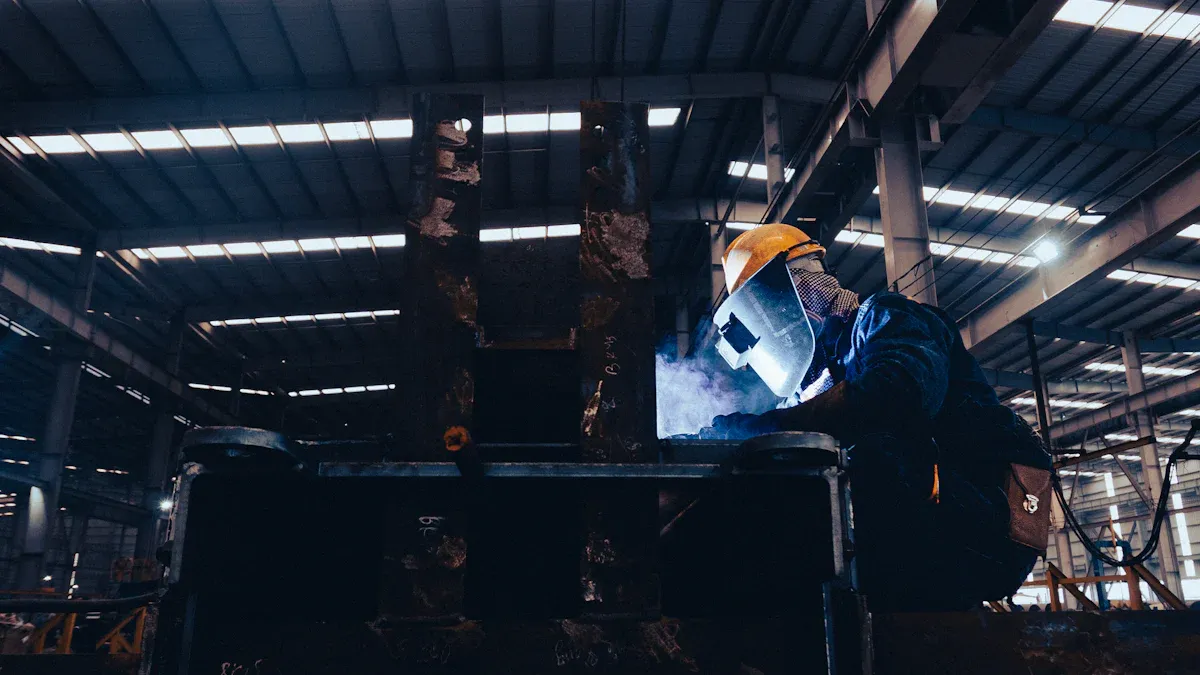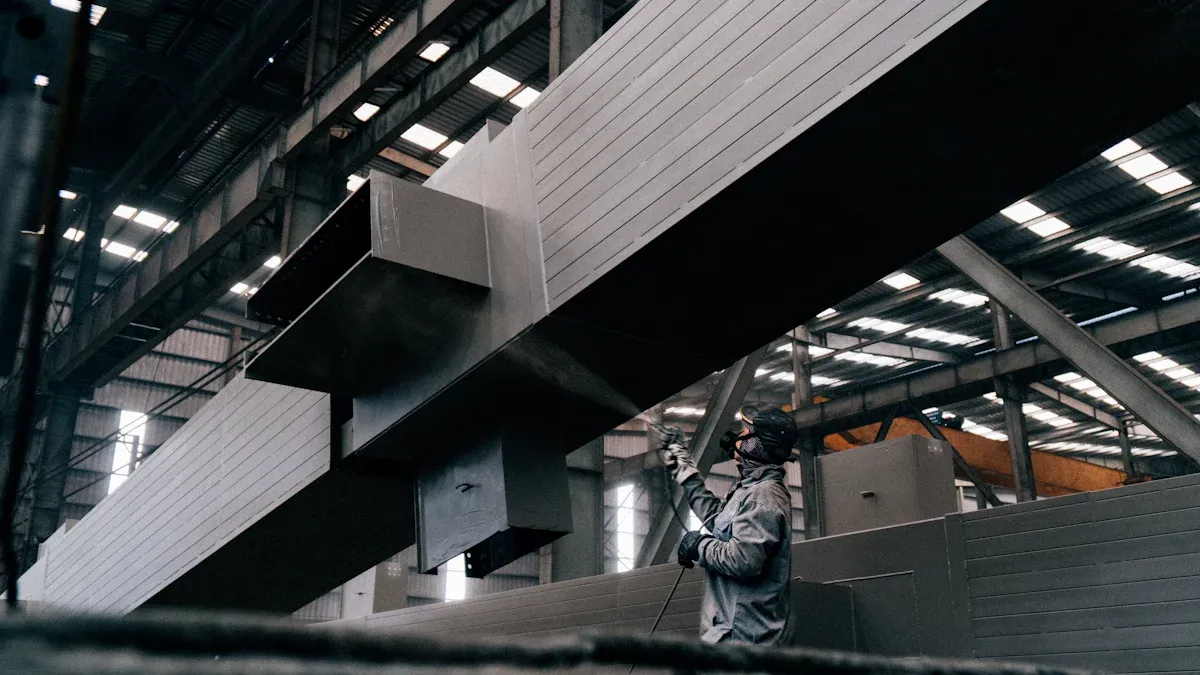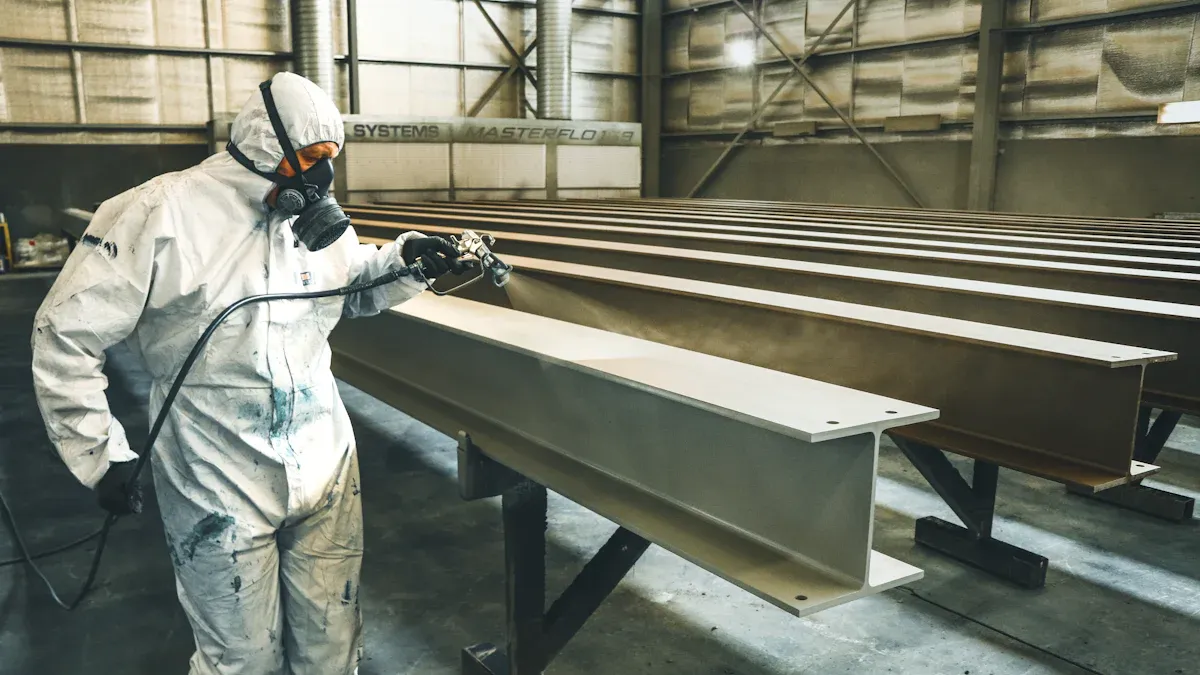
Thermal Spray and CVD methods for TAC coatings differ significantly in application processes and outcomes. Thermal Spray involves melting and spraying materials, creating thick, durable layers. CVD forms thin, uniform coatings through chemical reactions. You should consider these methods carefully as they impact performance, cost, and suitability for industrial applications like aerospace or medical tools.
Key Takeaways
- Thermal Spray works well for thick and strong coatings. It lasts long and is cheaper for big projects.
- CVD makes thin and even coatings that resist chemicals. It is great for exact work, like in electronics or medical tools.
- Think about what your project needs, like coating thickness, material match, and environmental effects, before picking a method.
Overview of TAC Coatings
Properties of TAC Coatings
Tantalum carbide (TAC) coatings are known for their exceptional properties. These coatings have an extremely high melting point, making them ideal for environments with intense heat. They also resist wear and corrosion, which helps extend the lifespan of tools and components. You’ll find that TAC coatings are incredibly hard, providing excellent protection against scratches and abrasions. Their chemical stability ensures they perform well in harsh chemical environments. Additionally, TAC coatings offer good electrical conductivity, which can be useful in certain industrial applications.
Industrial Applications of TAC Coatings
You’ll see TAC coatings used in a variety of industries due to their unique properties. In the aerospace sector, they protect components exposed to high temperatures and friction. In the medical field, TAC coatings are applied to surgical tools to enhance durability and reduce wear. These coatings also play a role in electronics, where their conductivity and resistance to corrosion are valuable. Manufacturing industries use TAC coatings on cutting tools and molds to improve performance and reduce maintenance needs. Their versatility makes them a popular choice across many fields.
Thermal Spray Method for TAC Coatings

Process Overview
The thermal spray method involves heating materials to a molten or semi-molten state and then spraying them onto a surface. You’ll find that this process uses high-energy sources like plasma, combustion, or electric arcs to melt the coating material. Once melted, the material is propelled toward the target surface using compressed gas. As the particles hit the surface, they cool and solidify, forming a dense and durable layer. This method allows you to apply thick coatings quickly, making it ideal for large-scale applications.
Advantages of Thermal Spray
Thermal spray offers several benefits. It provides excellent wear resistance, which helps extend the lifespan of components. You can also achieve a wide range of coating thicknesses, making it versatile for different needs. The process works on various materials, including metals, ceramics, and composites. Additionally, thermal spray is relatively fast, allowing you to coat large areas efficiently. Its ability to create thick layers makes it suitable for applications requiring heavy-duty protection.
Disadvantages of Thermal Spray
Despite its advantages, thermal spray has some limitations. The process can result in coatings with higher porosity compared to other methods. This may reduce the coating’s resistance to certain chemicals. You might also notice that thermal spray coatings lack the uniformity of thinner coatings like those produced by CVD. The equipment and setup can be costly, which might not be ideal for smaller-scale projects.
Applications of Thermal Spray TAC Coatings
Thermal spray TAC coatings are widely used in industries where durability and heat resistance are critical. For example, you’ll see them in aerospace applications, protecting engine components from extreme temperatures. They are also common in manufacturing, where they enhance the performance of cutting tools and molds. Additionally, thermal spray coatings are used in power generation and automotive industries to protect parts exposed to wear and corrosion.
CVD Method for TAC Coatings

Process Overview
The Chemical Vapor Deposition (CVD) method uses chemical reactions to form coatings on surfaces. You’ll start by introducing a gas mixture containing tantalum and carbon into a reaction chamber. Heat triggers the chemical reactions, causing tantalum carbide to deposit onto the target surface. This process creates thin, uniform layers with excellent adhesion. CVD works well for complex shapes and intricate designs, making it ideal for precision applications.
Advantages of CVD
CVD offers several benefits. It produces coatings with exceptional uniformity, ensuring consistent performance across the surface. You’ll find that the coatings are dense and free of pores, which enhances their resistance to chemicals and wear. The process allows for precise control over coating thickness, making it suitable for applications requiring fine tolerances. Additionally, CVD can coat internal surfaces and intricate geometries, which thermal spray methods often struggle to achieve.
Disadvantages of CVD
Despite its strengths, CVD has limitations. The process requires high temperatures, which may not suit all substrate materials. You’ll notice that it’s slower compared to thermal spray, making it less efficient for large-scale applications. The equipment and setup can be expensive, which might increase production costs. Handling the gases used in CVD also demands strict safety measures due to their potential toxicity.
Applications of CVD TAC Coatings
CVD TAC coatings excel in industries requiring precision and chemical resistance. You’ll see them in electronics, where their uniformity and conductivity enhance performance. They’re also used in medical tools, providing smooth, durable surfaces that resist wear. Aerospace components benefit from CVD coatings due to their ability to withstand extreme conditions. These coatings are ideal for applications demanding thin, high-quality layers.
Comparing Thermal Spray and CVD Methods
Cost Analysis
When comparing costs, you’ll notice that the thermal spray method is often more affordable for large-scale applications. Its ability to coat large areas quickly reduces labor and operational expenses. However, the initial investment in equipment can be high, which might not suit smaller projects.
CVD, on the other hand, tends to have higher operational costs. The process requires specialized equipment and high temperatures, which increase energy consumption. Additionally, the slower deposition rate means you’ll spend more time completing coatings, raising labor costs. If your application demands precision and uniformity, though, the higher cost may be justified.
Performance and Durability
Thermal spray coatings excel in durability. They create thick layers that resist wear and impact, making them ideal for heavy-duty applications. However, the higher porosity of thermal spray coatings can reduce chemical resistance, which might limit their use in corrosive environments.
CVD coatings offer superior performance in terms of uniformity and density. You’ll find that their pore-free structure enhances chemical resistance and wear protection. These coatings also adhere strongly to surfaces, ensuring long-term durability. If your application involves intricate designs or exposure to harsh chemicals, CVD coatings provide a reliable solution.
Application Suitability
Thermal spray is well-suited for applications requiring thick, durable coatings. You’ll see it used in industries like aerospace and manufacturing, where components face extreme heat and wear. It’s also effective for coating large surfaces quickly, making it a practical choice for large-scale projects.
CVD shines in applications demanding precision and thin coatings. Its ability to coat complex geometries makes it ideal for electronics and medical tools. If your project involves intricate designs or requires coatings with fine tolerances, CVD is the better option.
Environmental and Safety Considerations
Thermal spray methods pose fewer environmental risks. The process doesn’t involve toxic gases, but you’ll need to manage dust and particles generated during spraying. Proper ventilation and protective equipment ensure worker safety.
CVD processes require careful handling of gases, some of which can be hazardous. You’ll need strict safety protocols to prevent exposure and environmental contamination. Additionally, the high energy consumption of CVD may raise concerns about its environmental impact. If sustainability is a priority, thermal spray might be the more eco-friendly choice.
Selecting the Best Method for TAC Coatings
Key Factors to Consider
When choosing between thermal spray and CVD methods, you need to evaluate several factors. Start by considering the application requirements. Does your project need thick, durable coatings, or do you require thin, precise layers? Thermal spray works well for heavy-duty protection, while CVD excels in precision applications.
Next, think about the material compatibility. Some substrates may not withstand the high temperatures of the CVD process. Thermal spray offers more flexibility in this regard, as it works with a wider range of materials.
You should also assess the scale of the project. Thermal spray is faster and more cost-effective for large-scale applications. CVD, on the other hand, is better suited for smaller, intricate components.
Finally, don’t overlook environmental and safety considerations. If sustainability is a priority, thermal spray might be the better option due to its lower energy consumption and reduced handling of hazardous materials.
Tip: Create a checklist of your project’s specific needs. This will help you weigh the pros and cons of each method effectively.
Thermal Spray and CVD methods differ in coating thickness, precision, and cost. Thermal Spray suits large-scale, durable applications, while CVD excels in precision and chemical resistance.
Key Takeaway: Match the coating method to your project’s needs.
- For heavy-duty protection, choose Thermal Spray.
- For intricate designs or chemical exposure, opt for CVD.
Evaluate your budget, material, and environmental priorities before deciding.
FAQ
What is the main difference between Thermal Spray and CVD methods?
Thermal Spray creates thick, durable coatings quickly. CVD produces thin, uniform layers with excellent adhesion. Your choice depends on application needs like thickness, precision, or chemical resistance.
Can both methods work on all materials?
No, CVD requires materials that can withstand high temperatures. Thermal Spray works with a wider range of materials, making it more versatile for different substrates.
Which method is more environmentally friendly?
Thermal Spray is generally more eco-friendly. It uses less energy and avoids toxic gases. CVD requires strict safety protocols due to hazardous chemicals and higher energy consumption.
Tip: Always evaluate your project’s environmental priorities before selecting a method.


